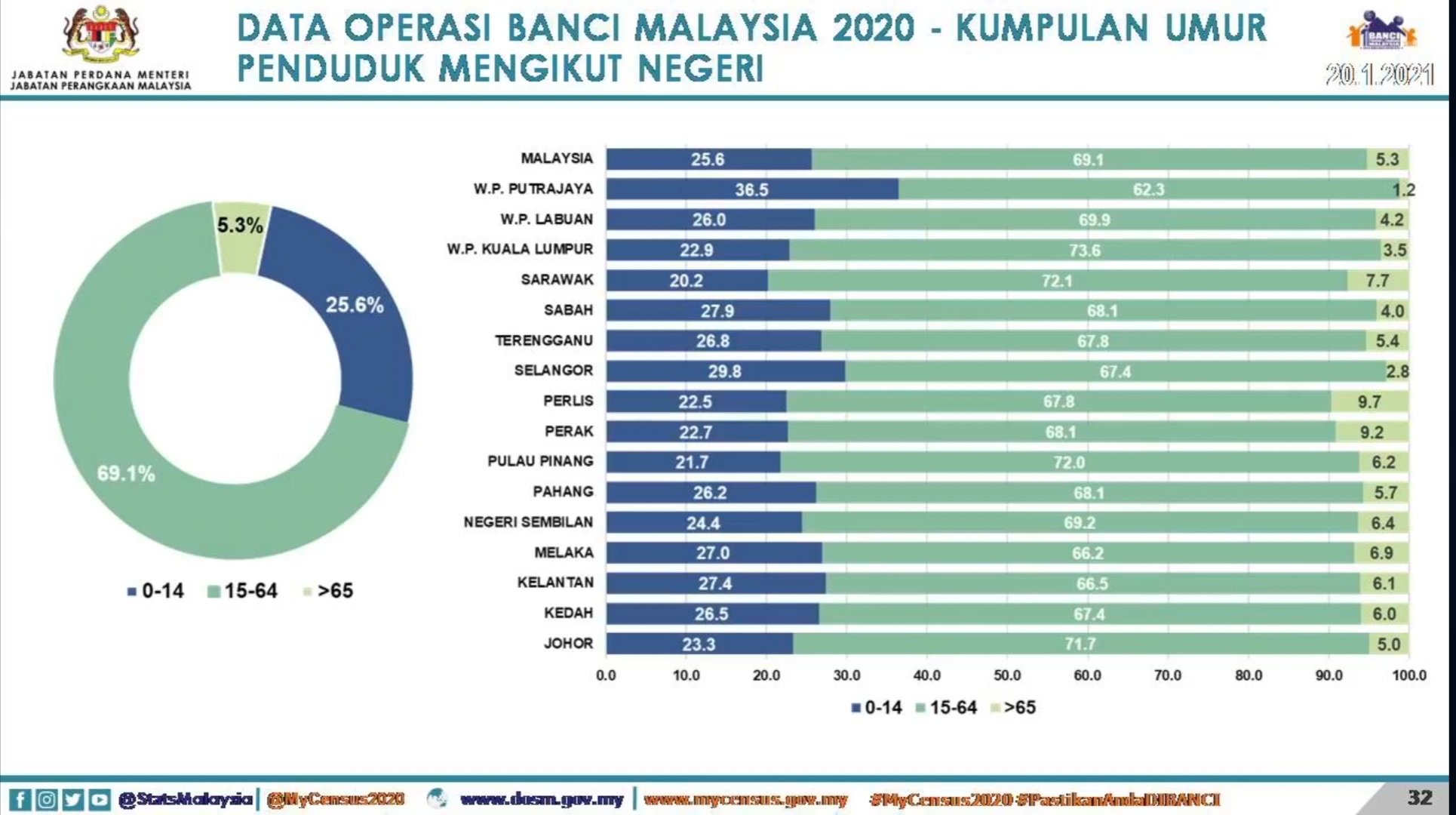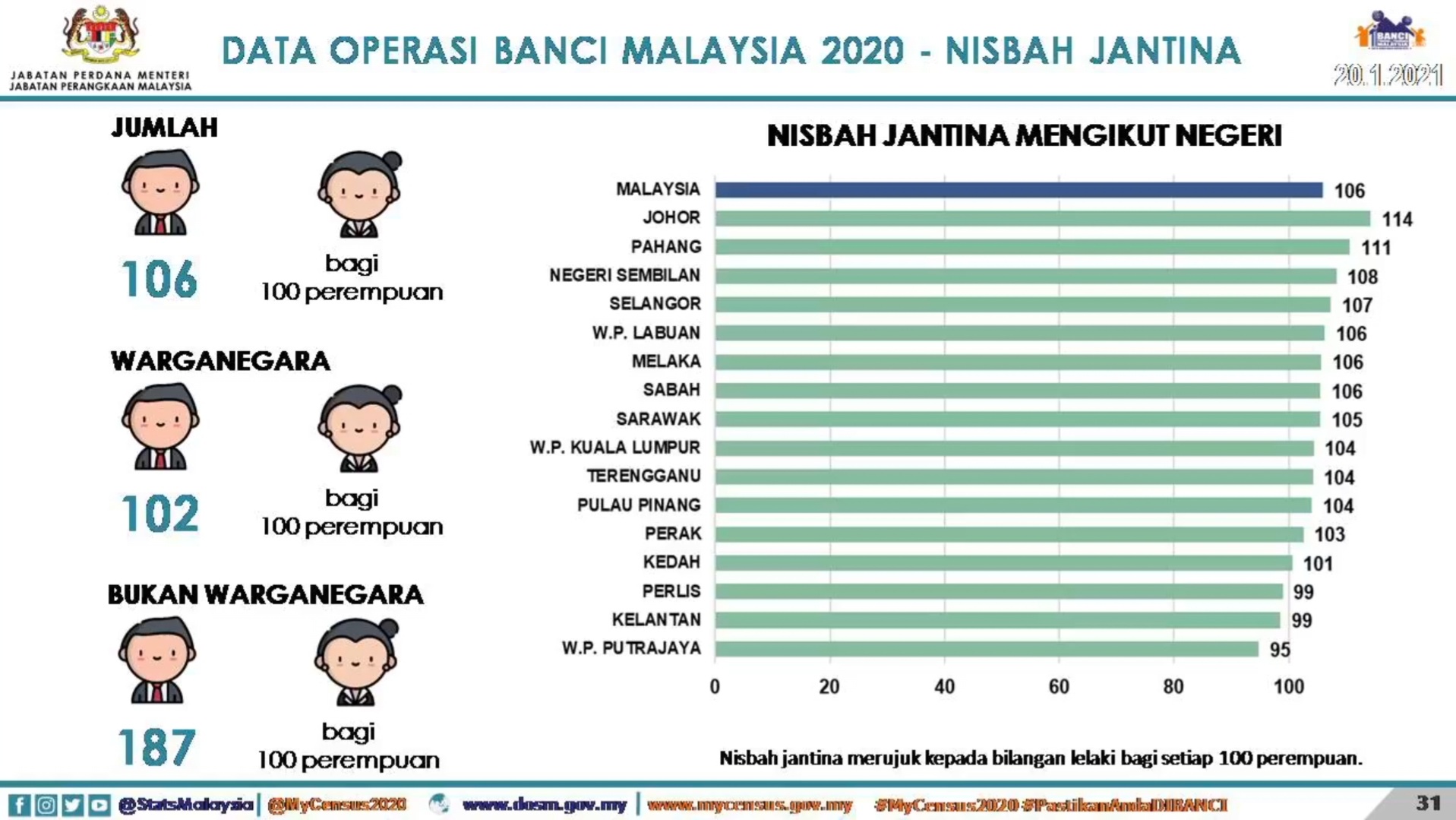

By Mei Kuan
Following the closing of the Malaysia Population and Housing Census 2020 (MyCensus 2020) yesterday, the preliminary findings of the decennial statistical exercise were announced live by the Department of Statistics on its Facebook page today (November 1).
Census Commissioner, Dato’ Sri Dr. Mohd Uzir Mahidin explained that the preliminary findings display statistics from the operation of the census was based on data as at 31 October 2021: “The data reported is data at the operational level that is subject to amendment after going through a process of quality review and validation.”
Thus, the preliminary findings serve as a threshold value for the MyCensus 2020 Report to be released in January 2022.
According to him, it is one of the most crucial statistical exercises conducted in numerous countries throughout the world.
Firstly, it provides comprehensive and detailed resident and housing statistics at a time for the demographic and socioeconomic characteristics of the population. Next, it provides fundamental information for monitoring the 2030 Agenda for Sustainable Development which includes a commitment to eradicate poverty, promote equality, environmental sustainability and ensuring that no one is left behind.
Launched in July last year, the census questionnaire contained 108 questions. The Yang di-Pertuan Agong was the first respondent to complete the census online using the e-Census platform.
As of October 31, 2021, a total of 32.3 million residents were enumerated or 99.2% of the estimated population of 32.6 million.
Out of 32.3 million Malaysians, 25.6% are young (0 – 14 years), 69.1% are working age (15 – 64 years) and 5.3% are 65 years and older. In Perak, 22.7% are young (0 – 14 years), 68.1% are working age (15 – 64 years) and 9.2% are 65 years and older.
“The average annual population growth rate is 1.6%. A total of 9.5 million living quarters and 8.1 million households were counted,” he highlighted.
The average household size recorded is 4.0 in 2020. The highest average household size by state was recorded in Kelantan (5.1), Sabah (4.6) and Terengganu (4.3).
The Malaysian population comprises 91.6% citizens and 8.4% non-citizens. The citizens consist of Bumiputera (69.7%), Chinese (22.9%), Indian (6.6%) and Others (0.8%) ethnic groups.
Meanwhile, the sex ratio shows 106 males for every 100 females in Malaysia. The male population in Malaysia was recorded at 51.5%, higher than the percentage of female population which recorded at 48.5%. In Perak, the ratio is at 103 males for every 100 females.
The census was conducted through five modes, namely e-Census (online), Computer Assisted Telephone Interview (online), Computer Assisted Personal Interview (face to face), Paper and Pen Interview (face to face) and Drop Off & Pick Up (face to face).
Putrajaya recorded the highest online census filling at 93.4% followed by Perak (34.5%) and Penang (32.1%). The highest face-to-face method was recorded by Kelantan (87.8%), Johor (76.9%) and Negeri Sembilan (78.5%).
The department expressed its gratitude to all Malaysian residents who cooperated in making the census a success.
=============================
Get your local news fast. Download the Ipoh Echo App on your mobile. Available on both Google Playstore and Apple Appstore.




